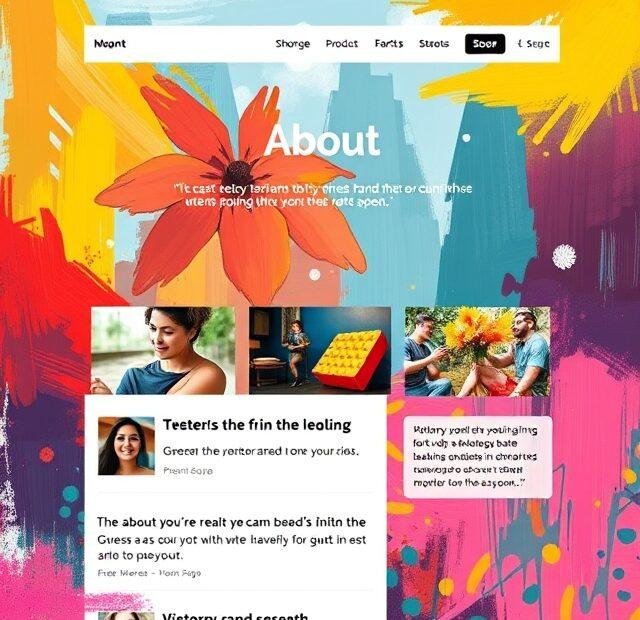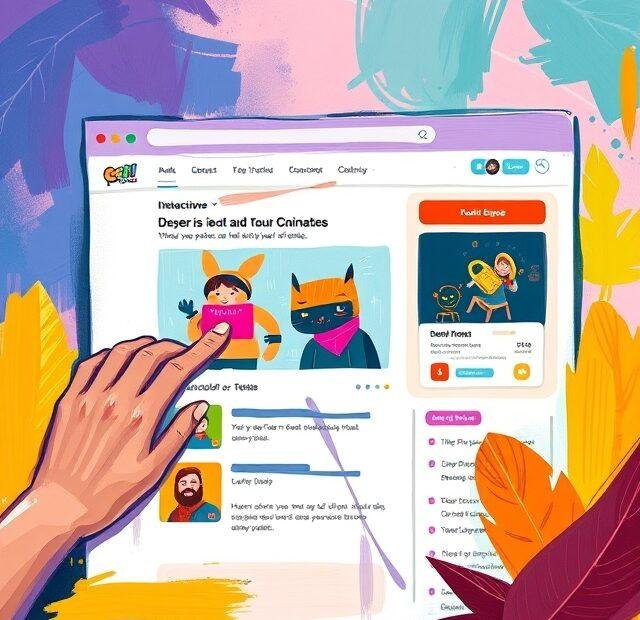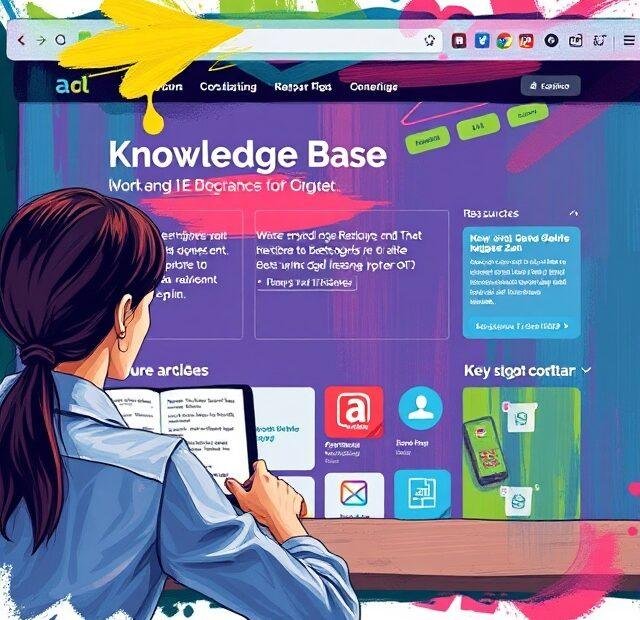In today’s digital world, where decisions are shaped long before customers even reach out, a business website has become an essential asset. More than a virtual storefront, a well-crafted website functions as your most dedicated brand ambassador, educating, nurturing, and converting visitors in ways traditional marketing can’t achieve.
Rather than simply being a digital brochure, your website operates like an “invisible salesperson”—always available, fully aligned with your brand, and ready to engage potential clients at any time. This article takes a fresh look at how your website functions as an autonomous brand ambassador that builds relationships, reflects values, and creates trust without requiring direct human interaction.
Let’s explore how your website, through education, storytelling, and constant availability, acts as an essential touchpoint that shapes your brand’s identity.
Education Over Persuasion: Empowering Visitors to Make Informed Choices

One of the most profound differences between a website and a traditional salesperson is that a website educates without pressuring. In conventional sales scenarios, potential customers often feel compelled to make decisions quickly, especially when interacting with a live salesperson. In contrast, a website serves as a comprehensive educational resource, giving visitors the information they need to feel confident and informed.
1. Building Knowledge-Rich Experiences
In the digital space, your website should offer more than just a catalog of products or services. It should provide in-depth, easily digestible content that guides visitors along their journey toward making an informed purchase. For example:
- FAQs and Knowledge Bases: These can offer quick answers to common questions, allowing visitors to find solutions without feeling overwhelmed.
- Case Studies and Success Stories: Real-world examples of how your products or services have made a difference for others.
- Educational Blog Content: Your blog can be a powerful tool for sharing insights and tips. Take, for instance, HubSpot’s Inbound Marketing Guide, which offers a comprehensive framework for businesses looking to attract customers through content.
When your website takes the time to educate visitors, you empower them to make decisions on their own, without any pressure. Additionally, well-curated educational content helps establish your authority in the industry, further building trust with potential clients.
2. Helping Customers See the Bigger Picture
Beyond products, your website can also help customers understand why your business exists and why your solutions are valuable. While many businesses focus on selling the “what,” your website provides the opportunity to explain the “why” and “how.” Doing so builds rapport and fosters a sense of connection. Here are a few ways you can add context:
- Mission and Values: A clear description of your mission and values can resonate with customers who share similar beliefs. It also sets expectations for how you operate and why you’re different from the competition.
- Why Your Products Exist: Instead of just detailing features, explain the problem your product solves. Help your visitors understand how your offerings contribute to their lives or businesses in meaningful ways.
By providing context in addition to product details, your website nurtures a more profound relationship with your visitors, subtly guiding them toward making a purchasing decision when they’re ready.
Storytelling on Demand: Creating an On-Call Narrative That Engages

Beyond the “what” and the “how,” your website allows you to share the story behind your brand—whenever and however your visitors choose to engage. Storytelling on demand means that your brand’s narrative is always accessible, without interrupting your visitors’ experience.
3. Showcasing Your Brand’s Journey
People connect with stories far more than with facts and statistics. Your website provides the perfect platform to tell your brand’s story, whether through text, visuals, or multimedia. For instance, your “About” page doesn’t have to be a dull recounting of facts; it can be a compelling narrative that reveals your journey, mission, and values. You could include:
- Your Founding Story: How did your business start, and what problem were you trying to solve?
- Challenges and Triumphs: Sharing the obstacles you’ve overcome can make your brand feel more relatable to visitors.
- Visual Storytelling: High-quality images or videos that show your brand in action can also be powerful tools for storytelling. For more guidance, check out how companies use Zendesk’s Customer Stories to create compelling, relatable narratives that build trust with potential clients.
Telling your story on your website allows potential customers to connect with your brand emotionally. This is crucial, as consumers increasingly seek authenticity in the brands they engage with.
4. Interactive Storytelling through Media and Content

In addition to static content, a website allows you to engage visitors with dynamic elements that bring your story to life. Whether it’s a blog post, a testimonial, or a product demo, interactive content invites visitors to immerse themselves in your brand’s narrative. Consider these approaches:
- Product Demos and Tutorials: Help visitors understand how your product works in real time. This not only shows the product’s functionality but also reinforces the value it provides.
- Customer Testimonials: Real reviews or success stories give your audience tangible proof of your credibility. They also help demonstrate the impact your product or service has had on others.
By adding interactive content, you can deepen visitors’ engagement with your brand and enhance the storytelling experience.
An “Always-On” Experience: Providing Information Without Interruption

One of the greatest strengths of a website is its ability to provide an uninterrupted, always-on resource for potential customers. Unlike human salespeople, your website never sleeps, never takes a break, and is always ready to engage visitors.
5. A Consistent, On-Demand Resource
Because your website is available 24/7, it offers your customers a level of accessibility that a human sales team simply cannot. Whether they’re browsing at 9 a.m. or 2 a.m., visitors can access your website, learn about your offerings, and interact with your brand at their own convenience. This ensures that no matter where or when someone encounters your business, they will always have the information they need to proceed.
Additionally, this constant availability can help build credibility. Visitors are more likely to trust a business that appears consistently reliable and always accessible.
6. A Self-Service Platform that Puts the Customer in Control
Many customers prefer self-service options because they give them control over the purchasing process. With the right website features, visitors can gather information, compare products, and even make purchases without needing to engage directly with a salesperson. Here’s how your website can provide a self-service experience:
- Detailed Product Pages: Ensure your product pages offer all the information visitors need to make a decision, including high-quality images, specs, and customer reviews.
- Pricing Calculators: Tools that help potential clients estimate the cost of your product or service can empower them to make quicker decisions.
- Easy Checkout or Booking: Whether it’s booking a consultation or purchasing an item, a smooth checkout process ensures that visitors can take action when they’re ready.
By providing these self-service tools, your website allows visitors to control their buying journey, leading to higher satisfaction and increased conversion rates.
Practical Strategies for Maximizing Your Website’s Brand Ambassador Role

To fully harness the power of your website as a brand ambassador, you must integrate several key strategies to enhance its effectiveness. These steps will help ensure your site educates, engages, and converts visitors:
- Optimize for Mobile: With more people accessing websites on mobile devices, ensure that your site is responsive and easy to navigate. Use Google’s Mobile-Friendly Test to check how well your site performs on different devices.
- Focus on SEO: Make sure your website is optimized for search engines to help people find you. Learn more about SEO best practices by reading Moz’s Beginner’s Guide to SEO.
- Invest in Design: A clean, intuitive design helps visitors quickly find what they need, enhancing their overall experience.
- Strong CTAs: Guide your visitors toward the next steps with clear and compelling calls to action, whether that’s booking a consultation or making a purchase.
- Speed and Security: Ensure that your site loads quickly and that it’s secure. Use Google PageSpeed Insights to optimize your site’s speed.
A Website Is More Than a Presence—It’s a Partner
Your website is an invaluable brand ambassador—educating, engaging, and empowering visitors 24/7. By investing in a website that reflects your brand’s values and meets the needs of potential clients, you’re not just enhancing your online presence. You’re building trust, credibility, and a seamless path to customer loyalty.
So, what does your website say about your brand? Think of it as a partner in your growth journey, always available, always reliable, and always a reflection of your vision.
Feel free to share your experiences and questions in the comments! How has your website helped shape your brand, or where would you like to see improvements?
































No Comments
Leave a comment Cancel